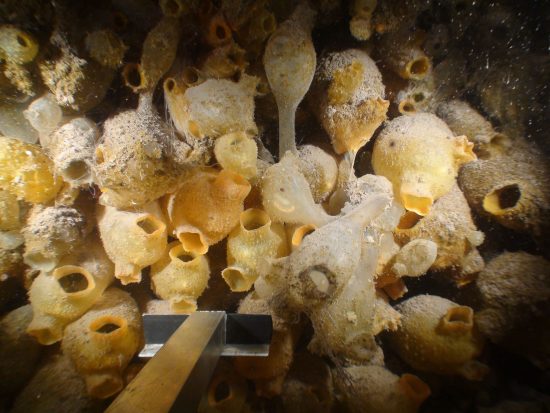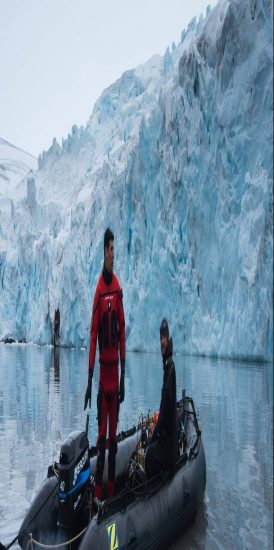



Melting glaciers will lead to a reduction of species biodiversity among the benthos (bottom-dwelling
organisms) community in the coastal waters off the Antarctic Peninsula, and
this in turn will impact an entire ecosystem on the seabed. The theory has been
verified through repeated immersion studies,
according to a study by scientists from Argentina, Germany and the UK, and the Alfred Wegener
Institute, Helmholtz Centre for Polar
and Marine Research (AWI), published in the journal Science Advances.
They
attribute the dwindling biodiversity to increased turbidity of the water. This
occurs when coastal glaciers start to melt due to global warming, resulting in
large quantities of sediment being carried into the seawater.
In the last fifty years, temperatures at the western Antarctic Peninsula have
increased almost five times faster than the global average. Currently, the effects
of how the retreat of glaciers would affect life on the seabed are still poorly
understood. Therefore, scientists at Dallmann Laboratory are currently mapping
and analyzing the benthos in Potter Cove, a bay on King George Island off the western
Antarctic Peninsula. Here, the AWI and the Argentine Antarctic Institute (IAA) operate
Dallmann Laboratory as part of the Argentine Carlini Station. The laboratory has
been monitoring the benthic flora and fauna for more than two decades.
In
1998, 2004 and 2010, divers photographed the plant communities at three
different sites and at different depths. The three locations were: near the
glacier’s edge, an area that experienced less effects from the glacier and in
the cove’s outer edge which experienced minimal influence.
They
also recorded the sedimentation rates, water temperatures and other
oceanographic parameters at the three locations, so that such data could be
linked with the biological data collected. In the end, the researchers
concluded that certain species were very sensitive to high sedimentation rates.
"Particularly tall-growing ascidians like some previously dominant sea
squirt species can’t adapt to the changed conditions and die out, while their
shorter relatives can readily accommodate the cloudy water and sediment cover,"
said AWI biologist and co-author of the study Dr Doris Abele.
"The
loss of important species is changing the coastal ecosystems and their highly
productive food webs, and we still can’t predict the long-term
consequences," she added.
 Mares
Mares 20th November 2015
20th November 2015